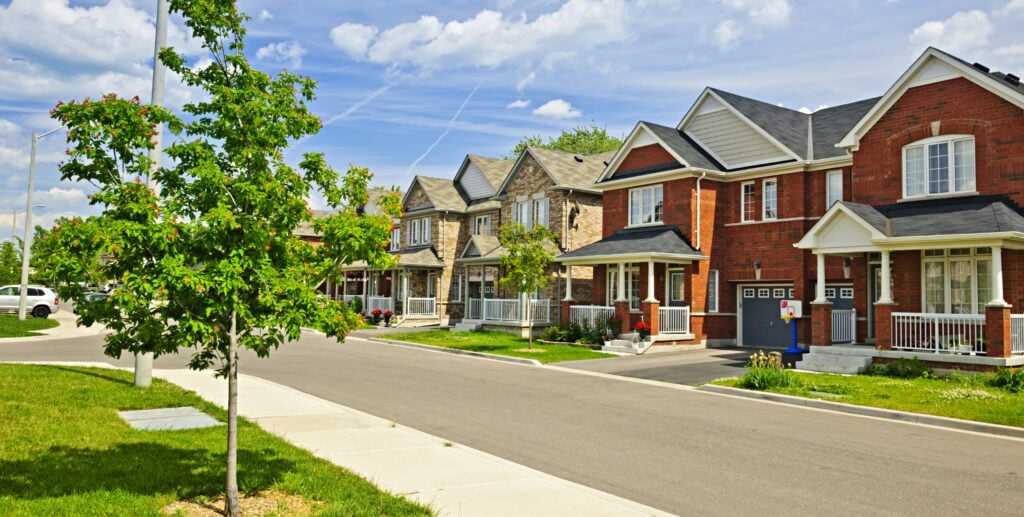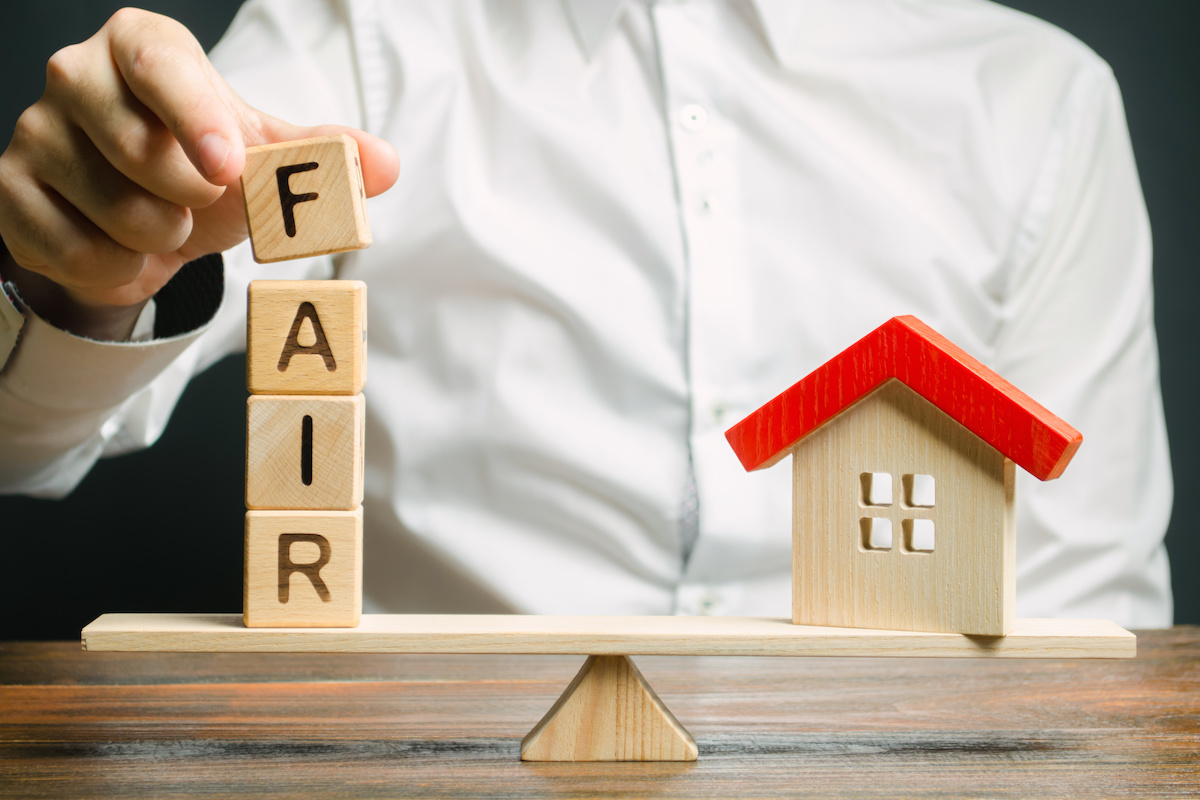Home prices have ballooned since 2020 off the back of strong buyer demand.
Home prices have been rising by an average of over $1,000 each day of the last five years in many areas as property industry experts slam governments for their sluggish response to critical housing shortages.
The alarming price rises have occurred amid record population growth since the Covid pandemic started in 2020, coupled with slow progress on the home construction front.
Government figures showed the country needed nearly 250,000 new homes built per year to keep pace with population growth but building activity has been well short in most years since 2020.
ABS figures released Tuesday revealed Australia approved 181,643 new homes last year, up from 165,000 the year prior.
Home prices have risen by more than $500 a day over the past five years in many areas.
It has meant the country is already 60,000 homes short of the number of new homes needed to meet housing targets just one year into the National Housing Accord plan to build 1.2 million homes by 2029.
Analysis of PropTrack figures have laid bare the kind of price impact housing shortages have had in the last five years – a period marked by historic lows in interest rates and record home purchasing activity.
Close to 200 suburbs nationally saw median prices rise by an average of more than $500 each day of the five years between May 2020 and May 2025.
This included 19 suburbs where median price rises exceeded $1,000 a day during the five-year period, leaving local prices millions of dollars higher than they were just five years ago.
The most significant rises were recorded in Sydney’s inner regions, along with the Gold Coast, Sunshine Coast and parts of Adelaide.
North Shore Sydney suburb Wollstonecraft had one of the most extreme price rises.
The suburb median house price ballooned from $2.8 million in 2020 to $5.7 million today – an average rise of $1550 across each day over the last five years.
There was a similar rise further north in the suburb of Warrawee, where the median house price grew from $2.45 million to $4.9 million, with prices rising an average of about $1,340 per day.
Houses in Gold Coast hub Surfers Paradise had the largest gain in Queensland, going from $1.78 million five years ago to $4 million today – an average rate of about $1210 per day.
Unley Park was the top growing market in South Australia, with rises equating to an average of $1,240 per day for first years.
Auctioneer Michael Garofolo said demand for “A-grade” homes has remained strong.
Economist and buyer’s agent Rich Harvey of Property Buyer said many of the Sydney areas with the fastest price rises had major issues with the pipeline of new housing supply.
“Somewhere like Wollstonecraft is highly sought after and is slated for higher density. There should be more stock there but getting it approved and out the ground is difficult,” he said.
“Some sites are no longer viable for new projects even after being earmarked for higher density because of the huge increases in building costs.”
He added that the country as a whole was failing to build enough housing to accommodate population increases from migration.
“There are numerous reasons prices have increased and all the forces work together, but perhaps the most significant is migration,” Mr Harvey said.
“We had close to zero migration at the start of Covid and then there was catch up migration and after that migration figures were essentially double (pre-Covid) numbers.
“Migration is still elevated and that’s put massive pressure on rents and prices at a time when building activity is slow.”
Lower interest rates have helped push up prices and more cuts are to come, with RBA Governor Michele Bullock expected to announce a cut in July. Picture: NewsWire / Nikki Short
PropTrack economist Eleanor Creagh said the cycle of price rises was often self-fulfilling.
Home seekers often bid up prices to secure homes faster out of fear they would eventually be priced out of their intended suburb, but this activity often ensured swifter market rises, Ms Creagh said.
Prices rises also fuelled strong upgrader activity: home buyers were able to secure new properties with larger and larger offers because of the steep value gain in their existing homes, she explained.
Housing Industry Association economist Tim Reardon said government taxes have exacerbated the problem.
He pointed to recent industry data that showed close to half the cost of supplying new house and land packages in major markets, including Sydney, was now government taxes and red tape.
Mr Reardon said taxes on foreign investment in new housing projects, including a doubling or tripling of stamp duty charges for foreign buyer in some states since 2017, had backfired.
The increased taxes meant a key source of funding for new housing projects disappeared, he said.
“They taxed the capital not the people,” Mr Reardon said. “The money dried up but people continued to come into the country through migration, putting more pressure on the housing market.”
DAILY GROWTH IN HOUSE PRICES MAY 2020-2025
| Suburb | Avg. price rises per day |
| Dover Heights NSW | $1,781 |
| Bellevue Hill NSW | $1,589 |
| Wollstonecraft NSW | $1,547 |
| Bronte NSW | $1,342 |
| Warrawee NSW | $1,338 |
| Double Bay NSW | $1,281 |
| Arcadia NSW | $1,266 |
| Centennial Park NSW | $1,242 |
| Unley Park SA | $1,237 |
| Surfers Paradise QLD | $1,212 |
| Vaucluse NSW | $1,211 |
| Northbridge NSW | $1,110 |
| Mosman NSW | $1,110 |
| Horsley Park NSW | $1,099 |
| Palm Beach NSW | $1,063 |
| Minyama QLD | $1,063 |
| North Bondi NSW | $1,047 |
| Waverton NSW | $1,014 |
| Woollahra NSW | $989 |
| Riverview NSW | $974 |
| South Coogee NSW | $966 |
| Hyde Park SA | $934 |
| Queens Park NSW | $914 |
| Putney NSW | $911 |
| Willoughby East NSW | $905 |
| Mermaid Beach QLD | $896 |
| Kensington NSW | $893 |
| Shelly Beach QLD | $889 |
| Greenwich NSW | $884 |
| East Lindfield NSW | $882 |
| Balgowlah Heights NSW | $871 |
| Tennyson Point NSW | $863 |
| Medindie SA | $856 |
| Burraneer NSW | $852 |
…



















 English (US) ·
English (US) ·